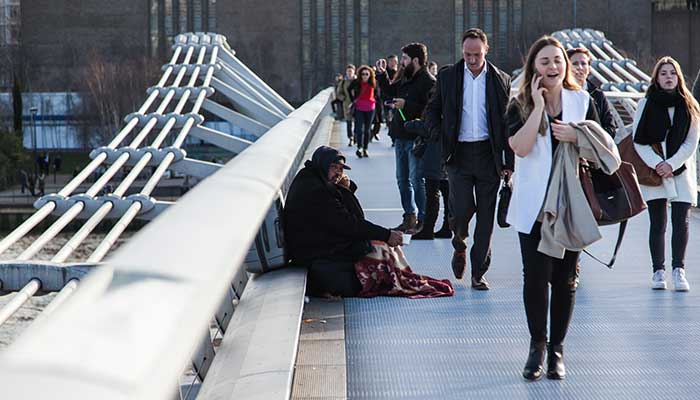
Photo: iStock
It said that since the late 2000s the incomes of lower income households in London had risen by more 10%, while those of high-income households had fallen by the same amount.
This was due to large falls in real earnings and strong growth in employment, the IFS said.
It warned that average UK income in 2015-16 was only 3.7% higher than before the recessionand with real wages falling and working age benefits and tax credits being cut, income growth since then is likely to have been very weak.
London’s experience was a more extreme version of what happened elsewhere in the UK, where income inequality was still lower in 2015-16 than prior to the recession, with median earnings down by around 5% though the employment rate up 1.5 percentage points.
The IFS’s Living Standards, Poverty and Inequality in the UK report, funded by the Joseph Rowntree Foundation, also found that 25% of poor children lived in the 10% most deprived local authority areas, with poverty especially geographically concentrated for working-age households.
Only 13% of pensioners in poverty were resident in the 10% most deprived localities.
Average income in the south east, the highest-income region, was 25% higher than in the west midlands, where incomes were lowest.
Income inequalities within regions were though far larger than differences in average incomes across them.
Average incomes in the south of England outside London, and in Scotland, grew faster than those of the country as a whole in the past 40 years, the IFS said, putting the south east nearly twice as far above the national average as it was in the 1970s at 13% compared with 7%.
The Midlands fared worst for income growth over the last 40 years. Having had slightly higher incomes than average in the mid 1970s, these were now 6% and 9% respectively below average for the East Midlands and West Midlands.
IFS research economist Agnes Norris Keiller, co-author of the report, said: “There are important gaps between the average incomes of different regions, though inequalities within regions are far larger than those between them.
“While London remains the most unequal part of the country, inequality in the capital has seen a dramatic decline over the last decade.”




















